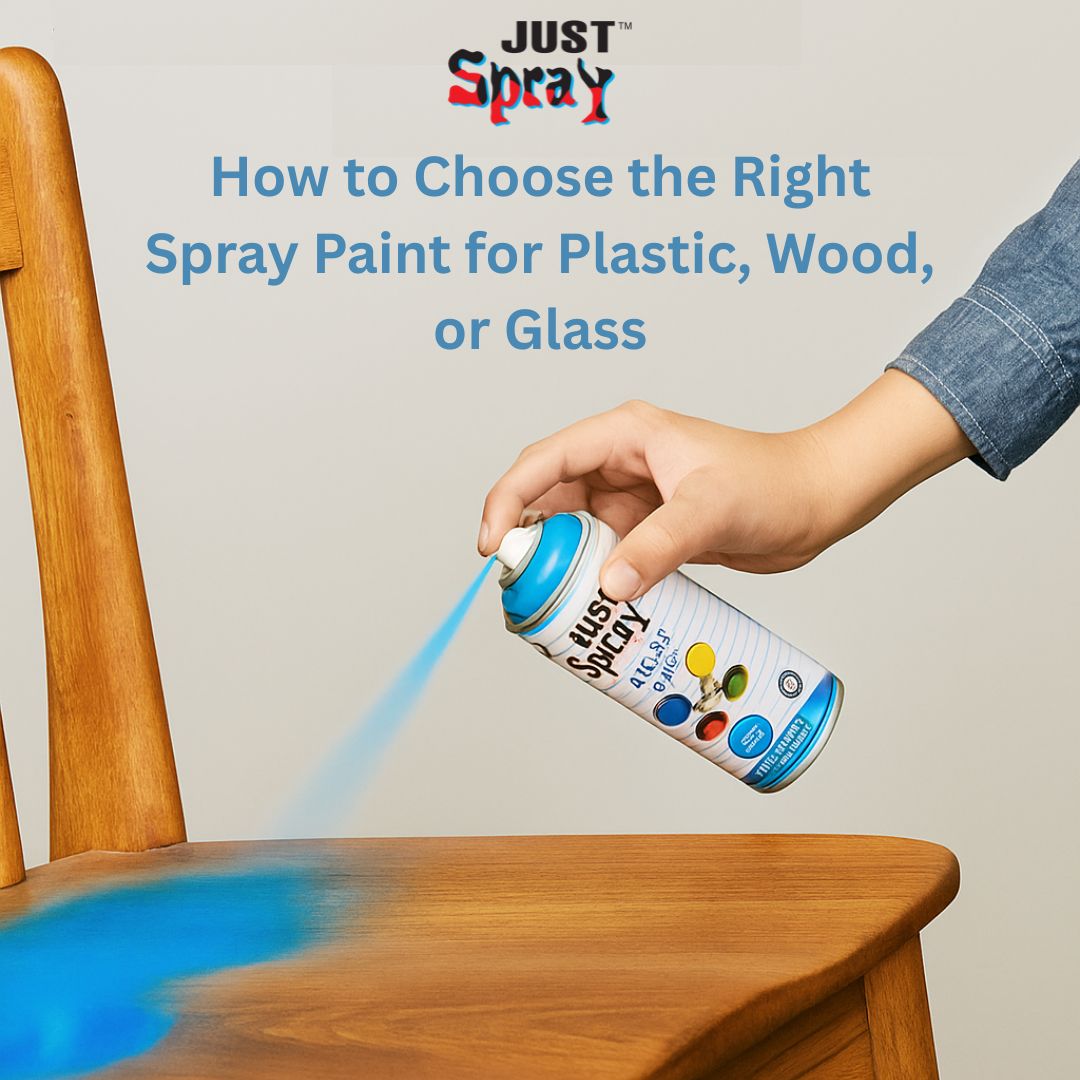Currently Empty: ₹0.00
How to Choose the Right Spray Paint for Plastic, Wood, or Glass

Spray paint has revolutionized DIY projects, home makeovers, and professional refurbishing alike. Whether you’re touching up furniture, revamping a plastic item, or giving glassware a creative twist, choosing the right spray paint is crucial for a long-lasting, beautiful finish.
In this guide, we’ll walk you through how to pick the perfect spray paint for plastic, wood, and glass surfaces—while also touching on products like scratch remover pens that complement your projects. If you want your painted surface to look professionally done and last longer, keep reading
Why Choosing the Right Spray Paint Matters
Not all paints are created equal. Using the wrong paint for the wrong surface often leads to issues like:
- Peeling or cracking
- Poor adhesion
- Uneven or blotchy finish
- Fading over time
Surface-specific spray paints, like those from Just Spray, are formulated to bond with particular materials, ensuring durability and a clean look.
Spray Paint for Plastic: What to Look For
Plastic is tricky—its smooth, non-porous surface resists regular paint. But the right formula makes all the difference.
Best Features to Look For:
- Adhesion Promoter or Primer: Helps paint stick to plastic without chipping.
- Flexible Formula: Allows the paint to move with the plastic.
- UV Resistance: Prevents fading, especially for outdoor items.
Popular Uses:
- Garden chairs
- Plastic buckets
- Toys
- Electrical casings
Recommended Product:
Try Just Spray Multipurpose Spray Paint for strong grip and smooth finish on plastic.
Spray Paint for Wood: Tips for a Smooth Finish
Wood is porous, so it absorbs paint easily. The challenge is getting a smooth, even coating without excessive soaking.
Key Features:
- Fast-drying enamel or acrylic base
- Primer-included paint (optional but convenient)
- Matte, gloss, or satin finish options
Surface Prep:
- Sand the surface to remove rough edges
- Clean with a damp cloth to remove dust
Best Use Cases:
- Furniture
- Wooden décor items
- Wall shelves
- Picture frames
Pro Tip:
Use a scratch remover pen on minor blemishes before painting for a perfect finish. These pens are available in the Just Spray Scratch Remover category.
Spray Paint for Glass: Do’s and Don’ts
Glass surfaces are smooth and reflective, making adhesion tricky but results stunning.
What You Need:
- Etching primer for glass
- Frosted or metallic finish spray paints
- Thin layers to avoid drips
Where to Use:
- Mason Jars
- Vases
- Mirrors
- Glass Tabletops
Safety Tip:
Always work in a well-ventilated area when painting glass to avoid fume build-up.
Just Spray Suggestion:
Use clear lacquer spray after color coating for added protection.
Must-Have Features in Any Spray Paint
Regardless of surface type, the ideal spray paint should have:
- Quick drying time
- Rust and moisture resistance
- UV protection
- Even nozzle pressure
- Eco-friendly formulation
Products from Just Spray are specifically engineered for Indian climates and surface types, ensuring your DIY or professional project holds up over time.
Combining Spray Paint with Scratch Remover Pens
Before you paint, inspect for scratches, dents, or scuffs. This is where scratch remover pens come in handy:
Benefits:
- Prepares surface for paint
- Hides small blemishes
- Compatible with plastic, wood, and metal
Explore our range of scratch remover pens for surface prep.
Final Thoughts
Whether you’re painting plastic planters, refreshing a wooden chair, or turning old glass jars into chic décor, choosing the right spray paint is crucial. From proper prep with scratch remover pens to selecting high-performance paints, each step enhances the final result.

Need help selecting the right product? Our support team is just a click away.

